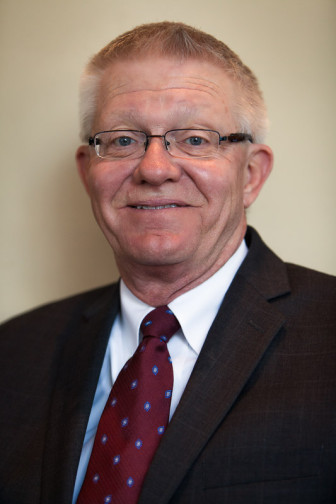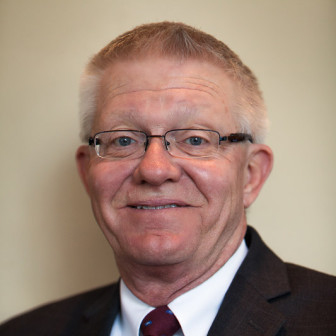 If you ever want to get the attention — and attendance — of all players in a judicial system, ask a judge to invite them to a meeting. It’s American democracy’s equivalent of a command performance before royalty (not that this retired judge equates the judicial branch with royalty).
If you ever want to get the attention — and attendance — of all players in a judicial system, ask a judge to invite them to a meeting. It’s American democracy’s equivalent of a command performance before royalty (not that this retired judge equates the judicial branch with royalty).
Not everyone really wants to attend meetings called by judges. Some attend because they don’t want to risk alienating a judge, and others want to be sure someone will be in the meeting to counter whatever their adversaries have to say.
I’ve seen this dynamic played out often with local juvenile justice councils, the one place in my home state of Illinois where prosecutors, law enforcement, public defenders, schools and many other voices are gathered around the same table to share ideas and plan improvements. Letting council members know that a judge is going to attend magically boosts turnout. It’s even more effective than the promise of a free lunch.
Although some judges are reluctant to use this tool, it may get some increased use in Illinois, where the state Supreme Court recently clarified Rule 64, Canon 4 of the Illinois Code of Judicial Conduct. It now very specifically acknowledges and approves judicial involvement and leadership in juvenile justice system matters. If judges take notice and follow the Canon, they can convene meetings with everyone in a community whose presence is necessary for effective policy development.
Juvenile justice councils have made significant progress in helping keep kids out of the system and preventing others from going too deeply into the system for too long. But not all communities have councils, and not all existing councils have benefited from active involvement of local juvenile court judges.
I recently attended a statewide gathering of juvenile councils. Even though a sitting judge didn’t convene the meeting, we had a good turnout. That may have been due in part to the fact that a retired judge called the meeting. (I chair the Illinois Juvenile Justice Commission, which hosted the meeting.) And attendance likely was influenced by the fact that the Commission has grant money to assist juvenile justice councils. Grant funds are another great motivator.
Using OJJDP’s online data tools, the meeting began by identifying the participant communities and quickly calculating the total population represented in the room — two-thirds of the state’s children between the ages of 10 and 17.
The Illinois Association of Juvenile Justice Councils provided results of its recent survey of local councils’ action issues and needs. The survey found that the single greatest need for local effectiveness was comprehensive stakeholder membership at the table.
Other important issues included:
- Truancy, suspension and expulsion were the universal issues between the school system and the justice system. Effective responses included simple conversations and relationships that develop when people get together. Those led to creation of truancy review boards, peer juries and youth courts as alternatives to formal court processing.
- Substance abuse by youth in Illinois includes marijuana, tobacco and alcohol like all states but many communities report heroin, methamphetamine and prescription drugs as major problems. Local councils use stakeholder information to spotlight usage trends and locations to assist law enforcement’s scarce resources.
- Including behavioral health agencies in coalitions has produced better focus on specific youth treatment models. Parent and community attitudes are changed through social media message campaigns.
- Domestic violence has emerged as a serious problem in Illinois homes in all jurisdictions.
- Local collaboratives have created awareness and responses to offset the overuse of detention, prosecution and out-of-home placements.
- Evidence-based practices and treatment alternatives are inconsistently available across this large state, but juvenile justice councils do advocate for and develop local resources — often in collaboration with adjoining counties or communities — to share the cost of needed but expensive treatment models. The same approach has worked for trauma-informed assessments, training and therapy.
The search continues for answers to persistent problems like homelessness; access to medical, mental health and behavioral health care; long waiting lists for treatment slots; and transportation for poor kids across long distances.
At the end of the day, I weighed the problems against the people at that meeting and came away hopeful. The power of coalition and collaboration is really extraordinary in Illinois and across the country.
The more we can engage judges in the work of juvenile justice councils, the more likely we will be to involve the entire community. State systems can make better laws and policies and provide funding and resources, but it takes community members to change attitudes and practices that impact individual lives.
That is not just a belief – I saw and heard the evidence. Juvenile justice councils can and do change the world.
Judge George W. Timberlake, Ret., is chair of the Illinois Juvenile Justice Commission, and an alternate member of Federal Advisory Committee on Juvenile Justice. He was a trial court judge for 23 years before retiring as chief judge of Illinois' 2nd Circuit. He is also a member of the Illinois Models for Change Coordinating Council, the Illinois Juvenile Justice Leadership Council, the Redeploy Illinois Oversight Board and the board of the Juvenile Justice Initiative, a statewide advocacy coalition.
